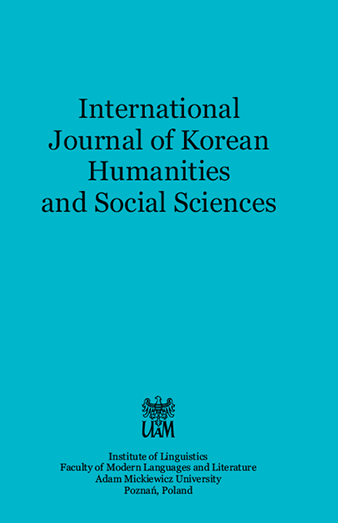From King Hyegong to Suh Dongjin: the evolution of LGBT and homosexual rights in the Korean community, according to historiographical texts
From King Hyegong to Suh Dongjin: the evolution of LGBT and homosexual rights in the Korean community, according to historiographical texts
Author(s): Aleksandra MüllerSubject(s): Social Sciences, Language and Literature Studies, Sociology, Social development, Social differentiation, Social Theory, Sociology of Literature
Published by: Uniwersytet im. Adama Mickiewicza w Poznaniu
Keywords: Korean society; sexual minorities; LGBTQ; historical analysis of attitudinal changes; queer identification.
Summary/Abstract: Even though homosexuality and other sexual minorities have never been considered illegal by the Korean government, people identifying as non-heteronormative were and are still vastly ostracised. Furthermore, the LGBT community was and is still facing social stigmatism. What cultural conditions influenced the way non-heteronormative minorities are perceived by most South Korean society? How has the LGBT minority developed over the centuries? When did the attitudes of South Koreans change for the better? The following article covers the answers to the above-stated questions based on a particular query of texts related to the topic based on historiographic records. In the first section, the influence of the Confucian ideas of Three Fundamental Bonds and Five Constant Virtues (三綱五倫, 삼강오륜 [samgangoryun]) on the image of 'correct relationship' and the Taoist division of gender roles based on energy adversity (yin (陰, 음 [eum]) and yang (陽, 양 [yang])) will be explained. This will serve as a basis for understanding cultural opposition to same-sex relationships. The following subchapter consists of a chronological overview of the most important historical records regarding same-sex relationships. The third subchapter presents the sexual minority groups formed in the 1990s, such as Chodong Society (초동회 [chodonghoe]), Between Friends (친구사이 [chingu sai]) and Maeum 001 (마음001 [maeum gongongil]), which had the most significant impact on the development of the contemporary LGBT movement in South Korea. The last section presents current changes and problems that the South Korean LGBT society faces.
Journal: International Journal of Korean Humanities and Social Sciences
- Issue Year: 8/2022
- Issue No: 1
- Page Range: 117-142
- Page Count: 26
- Language: English

